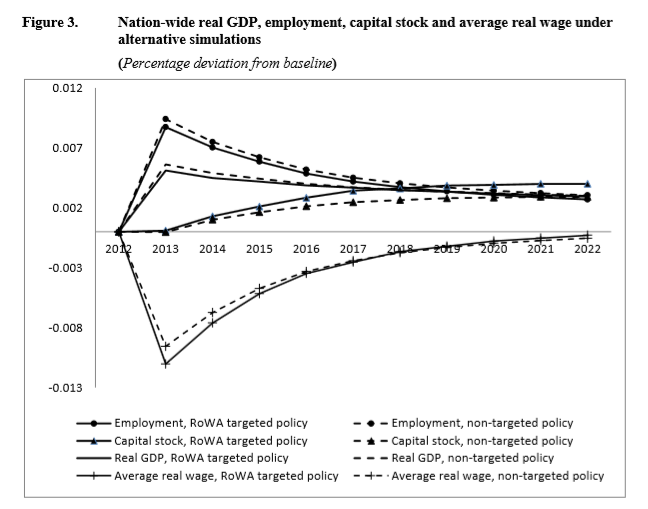MB has argued consistently that running a mass immigration ‘Big Australia’ policy necessarily lowers the wages of incumbent workers.
This view is supported by various Productivity Commission modelling (see here), as well as several notable Australian economists.
International analysis from the Bank of England and Cambridge University also shows that immigration reduces wages growth (see here).
The economics is simple: continually increasing labour supply via immigration necessarily reduces workers’ bargaining power and ergo wages growth. And yet commentators from the Fake Left, in particular, continually ignore this obvious fact.
Now, we have another set of modelling from Victoria University confirming that immigration does push down wages. Here is the summary of the results via The Conversation [my emphasis]:
As part of our research, we modelled two scenarios. In the first we looked at what happens with regionally targeted 457 visas, by assigning workers on these visas to non-metropolitan regions. In the second we modelled what would happen if the visa holders were to settle across regions according to their current settlement patterns…
At the national level, we found that employment and real GDP increase by nearly identical amounts and, likewise, decreases in national wages are the same under programs where immigrants are targeted to rural and regional areas and where they haven’t been targeted.
At the regional level, in the short run, we found targeted visa programs boost regional activity. But this does not hold in the long run. After five to 10 years, economic variables such as real regional GDP and regional employment start to look the same as the untargeted scenario.
The reason for this largely lies in the regional displacement of workers already in the country. In the short run, the targeted migration program boosts workers in the target region. This causes wages in the region to fall relative to wages in other regions. This discourages workers from other regions from moving to the region, and encourages workers in the region to leave.
We have also examined what would happen with permanent skilled migration programs targeted at regional and rural areas… we found similar results to temporary visas.
Below is the key chart from the report clearly showing the negative impact on average real wages from immigration:

As you can see, under the labour supply shock from immigration, it takes a decade for real wages to recover back to baseline levels.
In a time of surplus labour supply and anaemic wage growth, it makes absolutely no sense to run a mass immigration ‘Big Australia’ policy. Doing so is unambiguously detrimental to Australian workers – by reducing their bargaining power and wages, as well as increasing their cost of living through housing and eroding their overall quality of life.

